Customer Kudos
"I recommend zZounds to everyone all the time, not just friends. The payment plans are a blessing & help to to many up n coming young musicians needing/wanting good gear & the Play as you Pay will help them grow faster & better."
February 22, 2024

Recording the Electric Guitar
Recording electric guitar? We've got recommendations for the best microphones for guitar cabinets, plus our favorite low-wattage amps for studio recording. And if you're recording direct guitar, we've got the DI boxes, re-amping boxes and amp sim software plug-ins you'll need to get your finished sound.
How to Mic a Guitar Amp: Dynamics, Condensers, and Ribbons
The Shure SM57 microphone is perfect for close-miking loud guitar cabs, with its tailored frequency response and ability to handle high SPL (sound pressure level). In general, pointing the mic toward the outer edge of a speaker cone will yield a darker, fatter sound, while the cone's center will yield a brighter sound -- move your '57 around to find the "sweet spot" on your particular amp.
Another go-to dynamic microphone, the Sennheiser e906 can be hung by its cable directly over the top of your amp -- no mic stand necessary. A 3-position frequency rolloff switch right on the mic helps you shape your sound.
If you find that dynamic mics sound too harsh or "telephoney" on your amp, try a neutral-sounding large-diaphragm condenser with a detailed midrange, like the AKG C 214. Especially if you're also planning on overdubbing vocals, this microphone is a fantastic value.
Ribbon microphones like the Royer R-121 have enjoyed a comeback in the last decade, as modern ribbon materials have become more resilient and less likely to break. Ribbons tend to have a "smooth" quality that can round off the sharp edges of your tone, and they're a natural for recording guitar amps. Many ribbons sound a bit brighter on one side of the capsule -- be sure to compare the front and back.
Guitar Recording Tip -- Multiple Microphones: If you've got two or three microphones (and enough free tracks in your DAW), why not record multiple guitar mics simultaneously? Try one mic up close, and another mic one to three feet away from the amp. Or try placing two microphones "coincidentally" -- with capsules as close as possible to each other -- to minimize phase cancellation between them. Within your DAW, group the tracks together for editing, then adjust their levels independently as you mix.
Another go-to dynamic microphone, the Sennheiser e906 can be hung by its cable directly over the top of your amp -- no mic stand necessary. A 3-position frequency rolloff switch right on the mic helps you shape your sound.
If you find that dynamic mics sound too harsh or "telephoney" on your amp, try a neutral-sounding large-diaphragm condenser with a detailed midrange, like the AKG C 214. Especially if you're also planning on overdubbing vocals, this microphone is a fantastic value.
Ribbon microphones like the Royer R-121 have enjoyed a comeback in the last decade, as modern ribbon materials have become more resilient and less likely to break. Ribbons tend to have a "smooth" quality that can round off the sharp edges of your tone, and they're a natural for recording guitar amps. Many ribbons sound a bit brighter on one side of the capsule -- be sure to compare the front and back.
Guitar Recording Tip -- Multiple Microphones: If you've got two or three microphones (and enough free tracks in your DAW), why not record multiple guitar mics simultaneously? Try one mic up close, and another mic one to three feet away from the amp. Or try placing two microphones "coincidentally" -- with capsules as close as possible to each other -- to minimize phase cancellation between them. Within your DAW, group the tracks together for editing, then adjust their levels independently as you mix.



AKG C214 Large-Diaphragm Condenser Microphone
$479.00
- 8 x$59.88
- No Credit Check6 x$79.83
- No Credit Check4 x$119.75

Guitar Recording Tip -- Bidirectional Ribbons: While ribbon microphones can deliver great results on guitar amps, almost all ribbon mics have a figure-8 or bidirectional capsule that picks up equally on both sides of the mic. So if you're recording a band "live," a ribbon mic on a guitar amp could capture too much bleed from the drums or other instruments. For better results, you may want to try isolating the amp as much as possible before putting a ribbon mic on it.
The Best Guitar Amps for Recording
If you're doing a lot of guitar recording, you may want to invest in an amplifier that really shines in the studio. Often, this means a low-wattage amp with a nice clean tone, that also can deliver hard-driven tube sound without getting overly loud. The best studio guitar amps may look small -- but sound huge, like the Vox AC15C1.
Guitar Recording Tip -- Isolation Cabinets: Your amplifier sounds best when it's cranked up loud, but that kind of volume won't fly if your studio is, say, an apartment bedroom. The solution: an isolation cabinet like the Randall ISO12C Speaker Isolation Cabinet. Plug your amp head into the cabinet, mount a microphone right inside, and close the door to seal the whole rig inside a sound-dampening box. Then play guitar as you listen to the mic's output in your headphones, and dial in your amp sound without disturbing the neighbors.
Guitar Recording Tip -- Isolation Cabinets: Your amplifier sounds best when it's cranked up loud, but that kind of volume won't fly if your studio is, say, an apartment bedroom. The solution: an isolation cabinet like the Randall ISO12C Speaker Isolation Cabinet. Plug your amp head into the cabinet, mount a microphone right inside, and close the door to seal the whole rig inside a sound-dampening box. Then play guitar as you listen to the mic's output in your headphones, and dial in your amp sound without disturbing the neighbors.

Fender '65 Princeton Reverb Guitar Combo Amplifier (15 Watts, 1x10")
$1,499.99
- 12 x$125.00
- 8 x$187.50

Vox AC15 Custom Guitar Combo Amplifier (15 Watts, 1x12")
$829.99
- 12 x$69.17
- 8 x$103.75
- No Credit Check6 x$138.33
- No Credit Check4 x$207.50

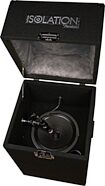
Randall ISO12C Speaker Isolation Cabinet (1x12")
$619.99
- 12 x$51.67
- 8 x$77.50
- No Credit Check6 x$103.33
- No Credit Check4 x$155.00
Recording Guitar "Direct" with a DI Box
Recording a direct "dry" guitar track can save you a lot of time in the studio. For example, if you only record a "wet" track with lots of reverb and delay, any bad notes or sloppy timing will be tough to edit out. But with a clean "dry" track, you can edit your performance, then add effects and amp simulations later. If you'd like the flexibility of being able to cut and paste between takes to build your guitar tracks, plan using a DI (direct input/direct injection) box to capture your dry, clean, "un-effected" signal all by itself.
To record direct guitar, you'll need a DI -- also known as a direct input or direct injection box -- such as the Radial JDI. These boxes accept the high-impedance signal coming through your guitar's 1/4" cable, and convert it to a low-impedance balanced XLR signal that can plug right into an audio interface.
Guitar Recording Tip -- Amp Direct Outs: Many guitar amps have a "direct out" jack that functions like a DI, outputting a balanced signal that can be plugged into your interface's XLR input. Since amp-based direct outs can be unpredictable, many recording engineers avoid them -- bypassing the amp completely. On the other hand, your amp's DI may sound great, so it's always worth experimenting to see what works best.
To record direct guitar, you'll need a DI -- also known as a direct input or direct injection box -- such as the Radial JDI. These boxes accept the high-impedance signal coming through your guitar's 1/4" cable, and convert it to a low-impedance balanced XLR signal that can plug right into an audio interface.
Guitar Recording Tip -- Amp Direct Outs: Many guitar amps have a "direct out" jack that functions like a DI, outputting a balanced signal that can be plugged into your interface's XLR input. Since amp-based direct outs can be unpredictable, many recording engineers avoid them -- bypassing the amp completely. On the other hand, your amp's DI may sound great, so it's always worth experimenting to see what works best.
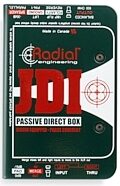
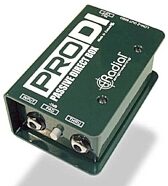

Rupert Neve Designs RNDI Active Transformer DI Box
$299.00
- 8 x$37.38
- No Credit Check6 x$49.83
- No Credit Check4 x$74.75

Reactive Load Boxes for Cranked-up Amp Sound at Lower Volumes
Tube distortion adds ear-pleasing harmonics and warmth to your signal -- that's why your tube amp sounds best when it's cranked up to ear-splitting volumes. To push your amp into sweet saturation at a more studio-friendly volume, try a reactive load box in line between your amp head and speaker cabinet. The Universal Audio OX Amp-Top Box is more than just a load box -- it also offers speaker cabinet modeling to help you hone your sound and give you a more versatile tonal palette.
Guitar Recording Tip -- Recording Direct vs. Miking an Amp: So you want to record direct guitar, but you love the sound of your amp and pedals. Fear not: you can track both simultaneously. First, plug your guitar into the Input jack of a DI box. Next, connect the DI's XLR output to your audio interface's input. Finally, connect the DI box's "Thru" jack to your amp's input, and mic up your amp as usual. Now, you're feeding your guitar's signal to both places.
Guitar Recording Tip -- Recording Direct vs. Miking an Amp: So you want to record direct guitar, but you love the sound of your amp and pedals. Fear not: you can track both simultaneously. First, plug your guitar into the Input jack of a DI box. Next, connect the DI's XLR output to your audio interface's input. Finally, connect the DI box's "Thru" jack to your amp's input, and mic up your amp as usual. Now, you're feeding your guitar's signal to both places.

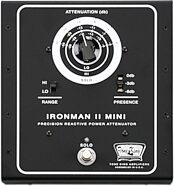
Tone King Ironman II Mini 30-Watt Attenuator
$395.00
- 8 x$49.38
- No Credit Check6 x$65.83
- No Credit Check4 x$98.75

Radial Headload Prodigy Tube Guitar Amp Attenuator
$599.99
- 12 x$50.00
- 8 x$75.00
- No Credit Check6 x$100.00
- No Credit Check4 x$150.00
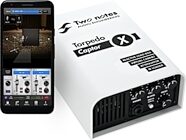
Two Notes Torpedo Captor X Premium Reactive Load Box, DI, and Attenuator
$499.99
- 8 x$62.50
- No Credit Check6 x$83.33
- No Credit Check4 x$125.00
Re-Amping: Recording Your Amp, After the Fact
Once you've recorded and edited a "dry" guitar track, you can "re-amp" it by sending the recorded track out of your audio interface, and into your guitar amp. As the guitar track plays back, dial in your amp settings. Then, mic up the amp and re-record the mic channel back into your DAW.
Re-amping is a great way to hone your recording-engineer skills: you can focus on the tone of your amp and microphone placement without all the pressure of performing.
Guitar Recording Tip -- Re-Amping Boxes: Don't plug your interface's output directly into your amp! If your audio interface has +4 dBV balanced line-level low-impedance outputs, you'll need a dedicated box to attenuate and convert the signal to the proper instrument-level, high-impedance signal. Use one of these reamping boxes.
Re-amping is a great way to hone your recording-engineer skills: you can focus on the tone of your amp and microphone placement without all the pressure of performing.
Guitar Recording Tip -- Re-Amping Boxes: Don't plug your interface's output directly into your amp! If your audio interface has +4 dBV balanced line-level low-impedance outputs, you'll need a dedicated box to attenuate and convert the signal to the proper instrument-level, high-impedance signal. Use one of these reamping boxes.
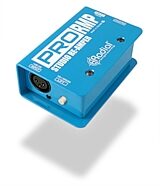
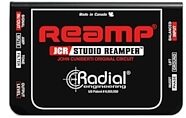

Radial X-Amp Studio Reamper Active Re-Amplifier
$249.99
- No Credit Check6 x$41.66
- No Credit Check4 x$62.50

Radial EXTC-Stereo Guitar Effects Interface and Reamper
$429.99
- 8 x$53.75
- No Credit Check6 x$71.66
- No Credit Check4 x$107.50
Audio Interfaces with Amp Modeling Software: Great Guitar Sounds in the Box
Sure, if you've got a killer collection of amps and and plenty of studio space, by all means experiment with re-amping your dry signal and miking up your amps. But if you don't have a killer amp collection -- amp modeling software to the rescue! The software comes with these beginner-friendly audio interfaces.
IK Multimedia's iRig guitar interfaces let you connect your guitar to your computer or iOS devices, so you can play and record through IK's powerful AmpliTube amp-modeling apps. The iRig HD 2 guitar interface adds a 1/4" output, so you can send your processed signal to an amp and play live through AmpliTube effects.
IK Multimedia's iRig guitar interfaces let you connect your guitar to your computer or iOS devices, so you can play and record through IK's powerful AmpliTube amp-modeling apps. The iRig HD 2 guitar interface adds a 1/4" output, so you can send your processed signal to an amp and play live through AmpliTube effects.

IK Multimedia iRig 2 Mobile Analog Guitar Interface for iOS/Mac with TRRS Jack
$49.99
- No Credit Check4 x$12.50

IK Multimedia iRig HD 2 iOS/USB Guitar Audio Interface
$99.99
- No Credit Check6 x$16.66
- No Credit Check4 x$25.00

IK Multimedia AXE I/O USB Audio Interface
$399.99
- 8 x$50.00
- No Credit Check6 x$66.66
- No Credit Check4 x$100.00

IK Multimedia AXE I/O Solo USB Audio Interface
$299.99
- 8 x$37.50
- No Credit Check6 x$50.00
- No Credit Check4 x$75.00